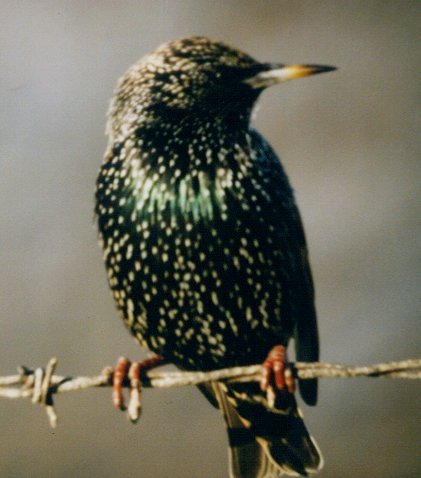The starling is only mentioned once by Shakespeare, in a passage which shows that in his time this bird, which possesses remarkable powers of imitation, was taught to say words. The fiery Hotspur declares that although the King had forbidden him to speak of Mortimer he would find his Majesty –
“When he lies asleep,
And in his ear I’ll holla ‘Mortimer!’
Nay,
I’ll have a starling shall be taught to speak
Nothing but ‘Mortimer,’ and give it him,
To keep his anger still in motion.”
[1st Henry IV – I, 3]
There it is – one passage in one play by the Bard. Wouldn’t seem so very important – except for the fact that because of this single reference there are now over 200 million of the birds making their home on the North American Continent.
In 1890 a drug manufacturer named Eugene Scheiffelin had the intriguing notion that New York City should be home to all Shakespeare’s songbirds. He brought thrushes and skylarks from England and released them into American skies. They failed to fight their way into our ecology. He also released 100 starlings into Central Park. They fared a little bit better.
The starling can now be found from Alaska to Florida in flocks that may number as many as one million. They carry disease, destroy millions of dollars in crops every year and drive indigenous species out of their natural habitat. In 1960 a flock in Boston was so large it fouled the engines of an airliner at takeoff and caused a deadly crash. They have also defied decades of attempts to curb their numbers. Starlings are the extreme edge of Darwinism.
It might have been a lot better if Hotspur had mentioned a parrot.


I’m late to this post, but I very much enjoyed it! I teach Shakespeare at a University in Long Island (and teach 1 Henry IV routinely), so I’m really pleased to have the local trivia!
Hi, I am a starling and am very smart and has learned to talk, whistle Mozart and other songs…. I know we are hated, but we are also sweet, intelligent and smart pets!
http://www.facebook.com/poppythebird